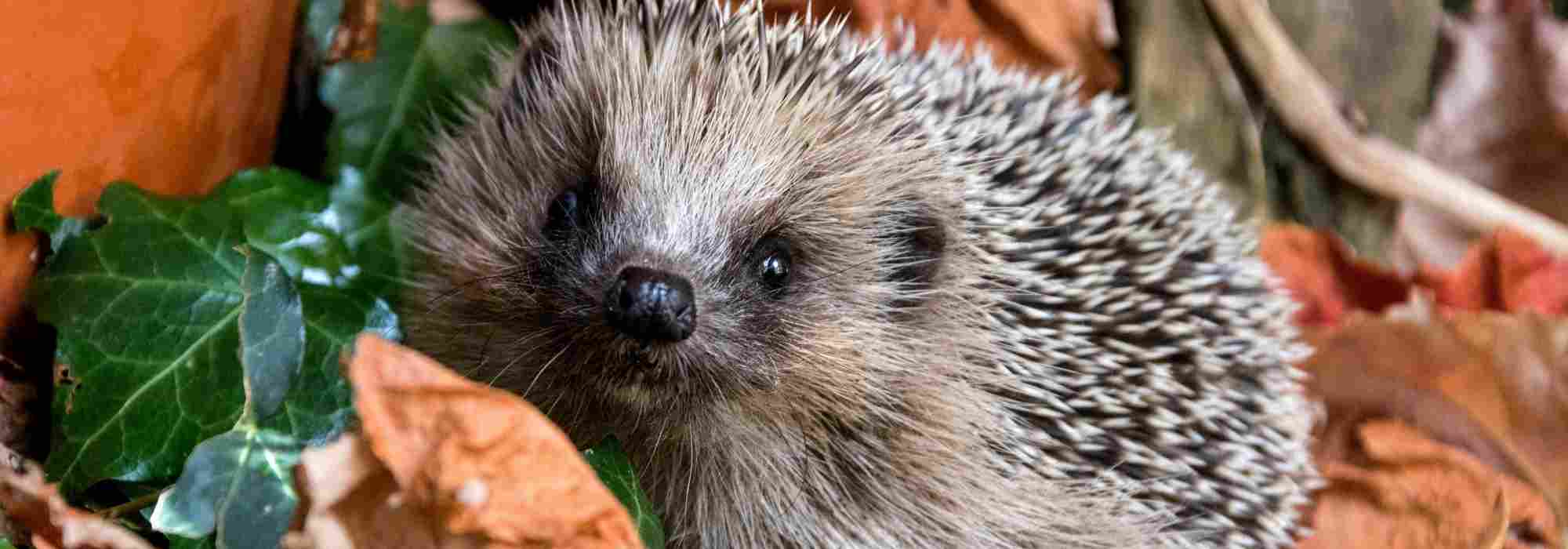
Welcoming a hedgehog in your garden
Attract, retain, and assist this auxiliary.
Contents
Hedgehogs, once very common, are becoming increasingly rare in our countryside. This poses a serious problem for ecosystems… but also for gardeners who have every interest in welcoming this valuable ally of vegetable gardens. Collisions with vehicles, poisoning from pesticidal substances, automatic mowers, fences, the removal of hedges, and the standardisation of our landscapes… dangers are ever-present for these small European mammals. Discover our tips to provide shelter and food for this endearing host of our regions.
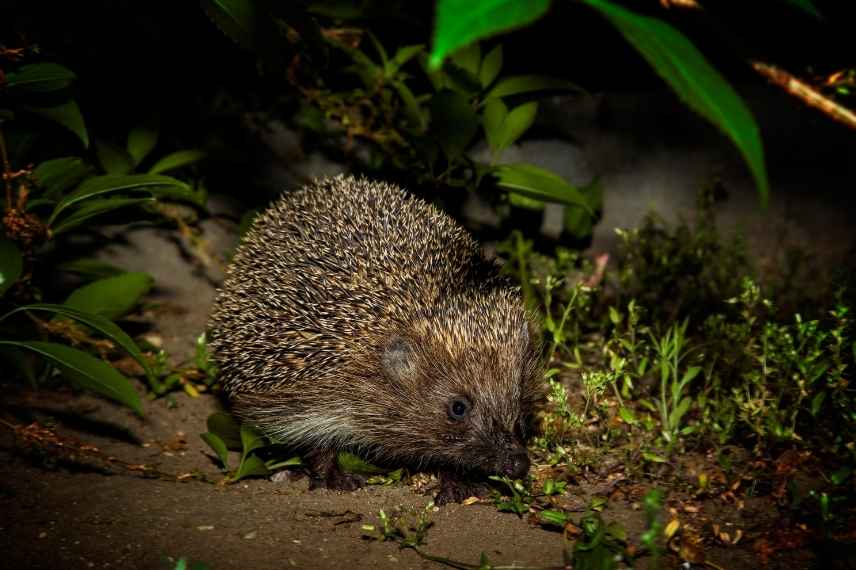
It is at dusk that you are most likely to see a hedgehog in your garden
Why attract a hedgehog to your garden?
These little spiky balls are among the most famous garden helpers. They can naturally rid you of excess populations of slugs and snails in your vegetable garden. They are also great predators of insects and their larvae (cockchafers, wireworms, cutworms, etc.).
They are a source of wonder and a way to connect children with nature. They will liven up your summer evenings (hedgehogs are not exactly models of discretion when hunting) and will be regular visitors if your garden suits them.
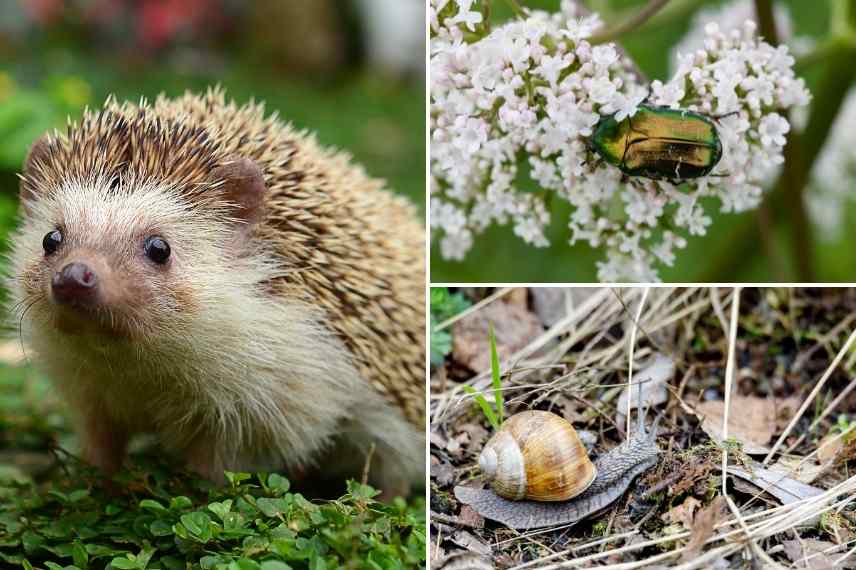
Understanding its needs for a proper welcome
Hedgehogs are small, omnivorous, and territorial mammals capable of adapting to a wide variety of landscapes. They have even become more common in suburbs and cities than in our countryside, where land consolidation has standardised their original habitat.
The ideal habitat for this endearing animal (which is nocturnal) would be a mosaic of hedges, untreated crops, thickets, forest edges, vegetable gardens, bramble patches, and grassy banks, providing a great diversity of prey and hiding places. The presence of water points such as ponds, pools, or turf moors is also very important for them.
Hedgehogs are hibernating animals: they need an old tree stump, a pile of branches, an abandoned burrow, a bramble patch, or any other shelter that can help them get through the harsh season, well protected from the cold and humidity.
Nowadays, hedgehogs face numerous dangers: direct or indirect poisoning from pesticidal substances, collisions with cars, the disappearance of their prey, overly enclosed gardens, summer droughts, destruction of hedges, automatic lawnmowers… as you can see, these little balls of spines do not have an easy life.
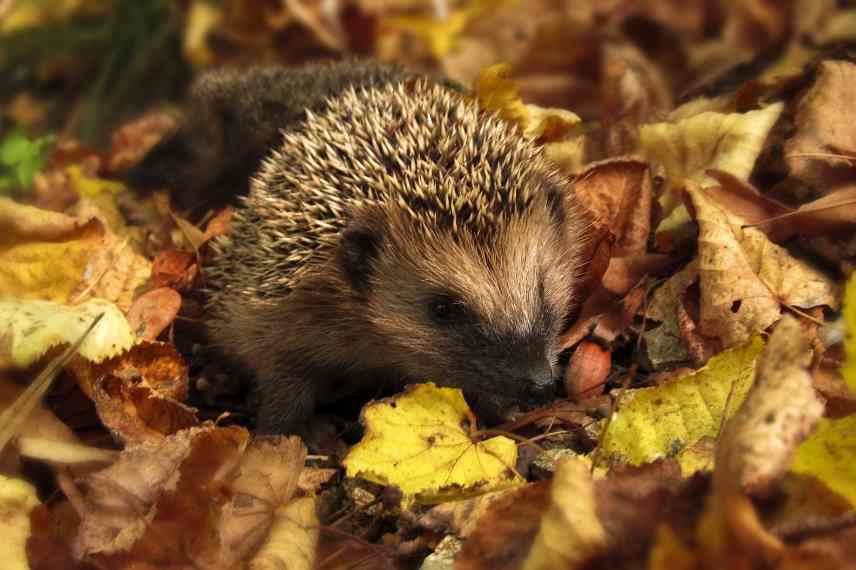
A simple pile of leaves will be very useful for the hedgehog
Give him a five-star garden
All hopes are not lost for this little visitor to our gardens: more and more gardeners are adapting their maintenance methods to provide it with shelter and food. Here are some key principles to follow to observe it during the warm summer evenings:
Leave a natural corner in your garden
Are you tired of mowing your English lawn? No worries, you will both encourage hedgehogs (and the myriad of organisms they feed on) and spare yourself this tedious task.
They will find insects, slugs, worms, and other prey that make up their diet. A meadow area also adds a very appealing rustic character to your garden.
Plant an orchard
As mentioned earlier, hedgehogs are omnivorous. They will not turn their noses up at a few fallen fruits in the late season. Fruit trees are therefore very beneficial to them and will also attract the insects and pests they will help you get rid of.
Provide materials for their shelter
Hedgehogs need various resources to build a shelter: a pile of leaves, twigs, pine needles, or bark left in a corner of your garden will be very useful for its construction.
Quench their thirst
Hedgehogs, like thousands of other species, struggle to find water during heatwaves. Leaving a bowl of water or digging a natural pond will be a great help during dry summers. However, be cautious of drowning: ensure your little visitor can always get out of the water in case of a fall! For example, place a hessian cloth at the water’s edge so it can climb out.
Set up a hibernation shelter
Hedgehogs readily accept the shelters that attentive gardeners offer them. Wine crates turned upside down and placed under a pile of branches are likely to welcome a resident for the winter!
A stack of logs arranged in a staggered manner against a wall or shed will provide a valuable “pocket” for hibernation. Don’t forget to leave a few leaves nearby so it can arrange this cavity to its liking.
Dry hedges made of dead wood of various sizes will be highly valued by hedgehogs. However, a simple pile of neglected leaves or branches can suffice for their happiness.
→ Read also: How to build a hedgehog shelter?
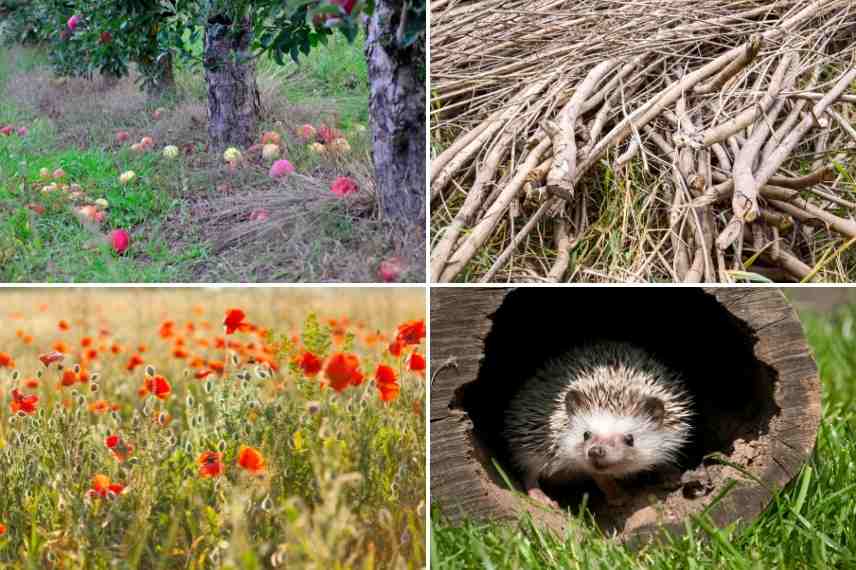 A natural garden with a flowering meadow, scattered branches and twigs, an orchard for the pantry: a five-star garden for a hedgehog!
A natural garden with a flowering meadow, scattered branches and twigs, an orchard for the pantry: a five-star garden for a hedgehog!
Feed them
There are many indirect ways to provide food for this little visitor (see above). However, it is also possible to leave them some treats during lean periods. You can “loyalise” their presence in the garden by offering cat or dog kibble, eggs, or even insects like mealworms.
Be careful never to give them bread or milk, which can cause fatal diarrhoea in hedgehogs.
Give them free access to your garden
Avoid turning your garden into a fortress! Fences will prevent hedgehogs from moving freely and may even strangle them if they try to force their way through. Creating an opening in your fence is essential for them to access your garden.
Don’t poison them… unintentionally
You will need to say goodbye to pesticides, especially insecticides that can indirectly poison hedgehogs by ingesting contaminated insects.
Do not use slug control products, as they will have the same effect on hedgehogs.
A little note from François: Hedgehogs are wild animals and protected by the Bern Convention. It is strictly forbidden to transport them to your garden or prevent them from leaving! These little animals need a territory of several hectares to live, reproduce, and feed.
- Subscribe!
- Contents
































Comments